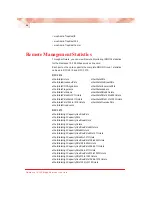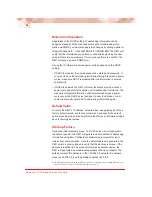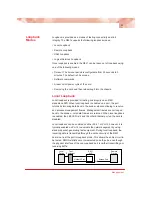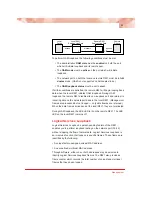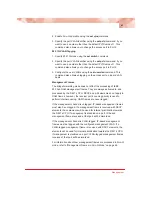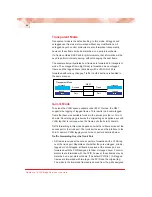
31
Management
Loopback
Modes
Loopback is provided as a means of testing connectivity and link
integrity. The R821 supports the following loopback modes:
•
Local Loopback
•
Remote Loopback
•
OAM Loopback
•
Logical Services Loopback
Once loopback is enabled, the R821 can be taken out of loopback using
one of the following means:
•
Timeout. The timeout period is configurable from 30 seconds to 5
minutes. The default is 30 seconds.
•
Software commands.
•
A reset or full power cycle of the card.
•
Removing the card and then reinserting it into the chassis.
Local Loopback
Local loopback is provided for testing link integrity on an R821
standalone NID. When local loopback is enabled on a port, the port
returns its incoming data back to the sender, while continuing to receive
and process management frames. Management frames are not looped
back to the sender—only data frames are returned. When local loopback
is enabled, the LBK LED is lit and the other Ethernet port on the card is
disabled.
Local loopback can be enabled on either Port 1 or Port 2, however, it is
typically enabled on Port 2 to evaluate the network segment by using
standard packet-generating test equipment. During local loopback, the
incoming data is transmitted through the entire circuitry of the R821
board, not just the port in loopback mode. This allows the entire circuit to
be tested. RMON statistics are incremented on both ports, even though
the physical interface of the non-loopback port is neither transmitting nor
receiving traffic.
R821
NID
Network Port
Local
Device
Remote
Device
Access Port
X
Test
Equipment








